---------------------------------------------------------
Ducks are pretty easy animals to add to your farm. They don’t need much in terms of shelter – just a secure, safe place to retreat to. It can be a sectioned-off corner of your barn or shed, or you can even house them in your chicken coop if you want to.
When I started out with ducks, I gave them their own house for a couple of reasons. First, my chicken coop was already pretty full of chickens and pretty small. Second, ducks don’t roost up high when sleeping, they just bed down on the ground. I didn’t want the ducks nesting under the chicken roosts and getting pooped on all night. But third and most important to me, is that ducks are just really wet.
Chickens hate being wet and in the winter that moisture can leave them susceptible to frostbite. When ducks come into the house, they are often wet and their poop is mostly liquid from all the water they drink. They expel a lot of moisture when they breathe. I decided it was best for the chickens and ducks to just have separate homes, but they would be sharing a run & free-range space. Click here to read more about keeping chickens & ducks together
What do ducks need in a house?
Ducks don’t need anything fancy. They sleep on the floor and don’t even really need a nest box. A cozy corner of the house with a pile of straw is good enough for egg laying. Their house can just be a wooden box or old dog house that is at least 3 feet high, with 4 square feet of floor space for each duck you plan to have.
In addition to the indoor area, ducks will need a minimum of 10 square feet of secure outside space per duck. I think 20 square feet per duck is MUCH more realistic, however, especially if you won’t be allowing your ducks to free range.
Ducks are large and somewhat awkward on land so you want to have a decent size door – about 14 inches wide and 12-14 inches tall. The house should either be on the ground or have a low ramp. You might need to add traction strips or a mat on the ramp to help wet, webbed feet navigate. Fill the house with plenty of straw for them to snuggle down into and for making a nest out of.
The most important thing the duck house needs is ventilation. All that moisture needs to escape somewhere so be sure to add plenty of ventilation at the top of the house.
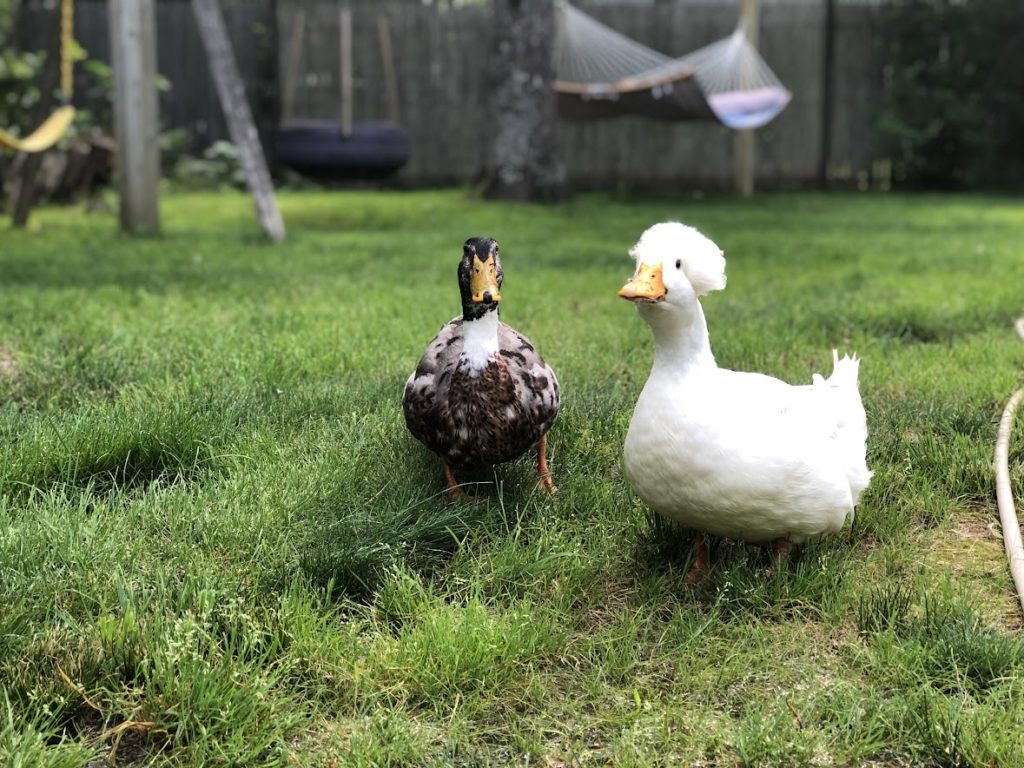
How we made our first duck house
We had a pretty big scrap wood pile so we decided to save money and build our duck house entirely out of scrap wood. Was it the most beautiful duck house ever? No, but it was nearly free and kept our ducks warm & safe.
We only planned on raising two ducks. Famous last words right? We made our first duck house 2 feet x 4 feet and about 4 feet high. We laid everything out on the ground before screwing it all together. Below you can see how we laid out the front and back walls and floor. We didn’t have any big sheets of plywood in our scrap pile, so we had to piece together smaller pieces of wood to cover the walls.
Once the pieces were all cut, we assembled the frame and screwed on the random plywood pieces. We attached the bottom of the back wall to the floor with hinges so we could have a large, drop-down access door for cleaning and collecting eggs. Don’t forget to include human access when building your duck house! We used a window sash lock & a spring-loaded eye hook to keep the door closed and predator-proof.
The chickens thought it was perfect just the way it is – no ducks needed.
Be sure to include lots of ventilation
Before we built the ends, we attached some hardware cloth over the roof and down about 6 inches on one side for ventilation. To cover the sides, it got really tricky as we ran out of plywood scraps. Luckily, we had some random boards and some wood from an old swingset we had dismantled so we cut those down to size.
We had some leftover corrugated roof panels from when we built our chicken run. We attached these over the hardware cloth roof. The hardware cloth keeps it predator proof and the panels keep the rain out. Because the panels are ridged, air can be exchanged in each ridge so it provides tons of ventilation. Additional ventilation comes in that 6-inch side we left open at the top of the left end.
Finishing Touches
To cover up the horrible gaps and imperfections that come with using scrap wood, we added some 1x4s (also from our scrap pile – I wasn’t kidding when I said it was a big pile!) on all the corners as trim. Then we used exterior caulking to seal all the edges so the house wouldn’t be drafty. Before the final installation, we had all our work verified by “official” home inspectors and got the all-clear.
One of the best things we ended up doing was laying down peel & stick vinyl tiles on the floor and about 1 foot up each wall. Between their poop and all the mud & water they track in, it made clean up so much easier and will save the wood from rotting.
We painted the entire duck house in the same blue as the chicken coop. It amazes me how transformative a simple coat of paint can be. Once all the boards and random pieces of wood were painted the same color, it didn’t look all that bad.
Giving the ducks a space in the chicken run
Our chickens have a nice, secure, and spacious run. We decided to take a little of that as a “duck only” area. Using 2x4s and chicken wire, we constructed a wall inside the run to separate the ducks. The wall doesn’t have to be predator proof because it is inside the run, it just has to keep the chickens out. The duck area we walled off will be 44 square feet, just right for two ducks.
Once the run was all set, we leveled some cinder blocks for the house foundation. Then we cut a hole in the wall of the run for the duck door and screwed the wire in several places to the front of the duck house. We added a little ramp and everyone was good to go!
We decided not to have a door on the duck house. The ducks actually liked to sleep outside, or at least have access to the outside at night. They are much more cold-hardy than chickens. Not having a door is not practical for everyone. The run our ducks are living in has a solid roof and hardware cloth buried 2 feet in the ground to stop digging predators. I feel safe letting them have outside access all the time. We also bring their food dish in at night to discourage any rodent visitors.
This duck house is not going to win any prizes for being the most beautiful, but the price was certainly right!
EDITED: I was right, we ended up adding onto our duck flock after just a couple of months, and just a few years later we had over a dozen! Word to the wise, always go bigger! The chickens & ducks now share a very roomy 300-square-foot barn. you can click here to read more about our current poultry barn
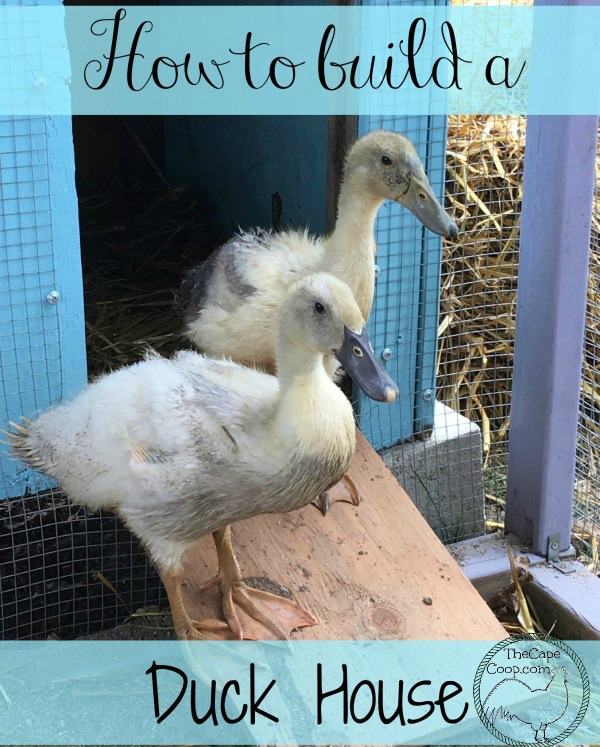
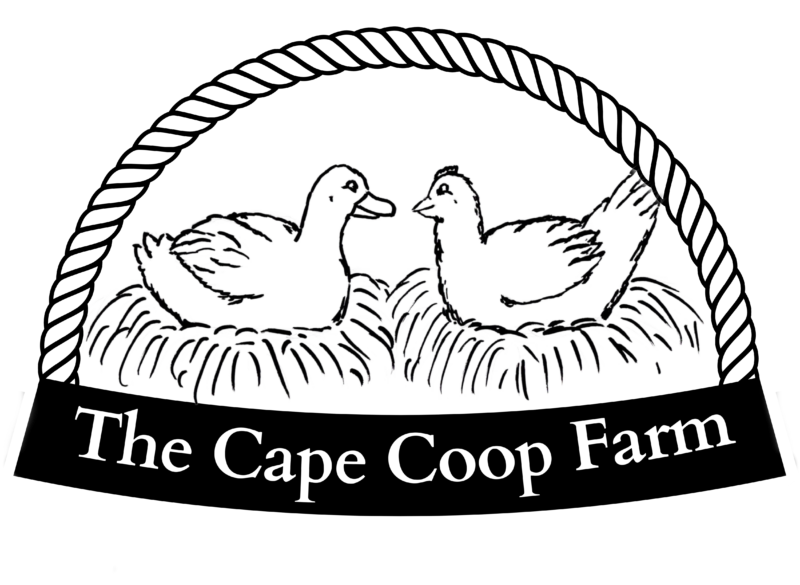
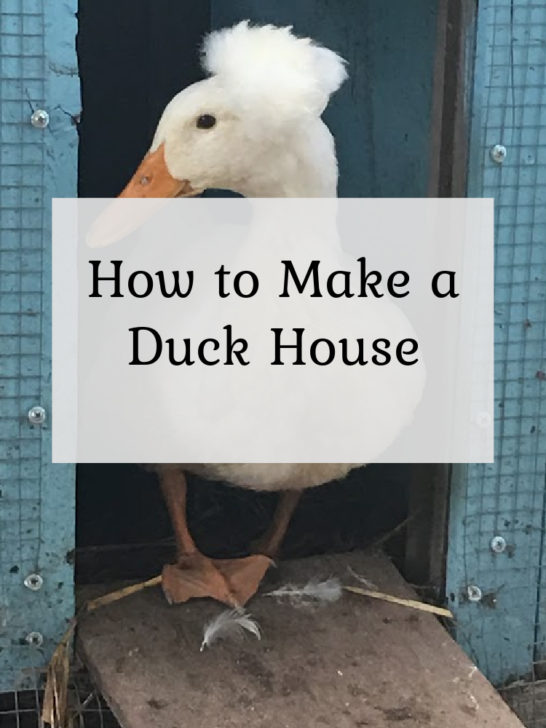

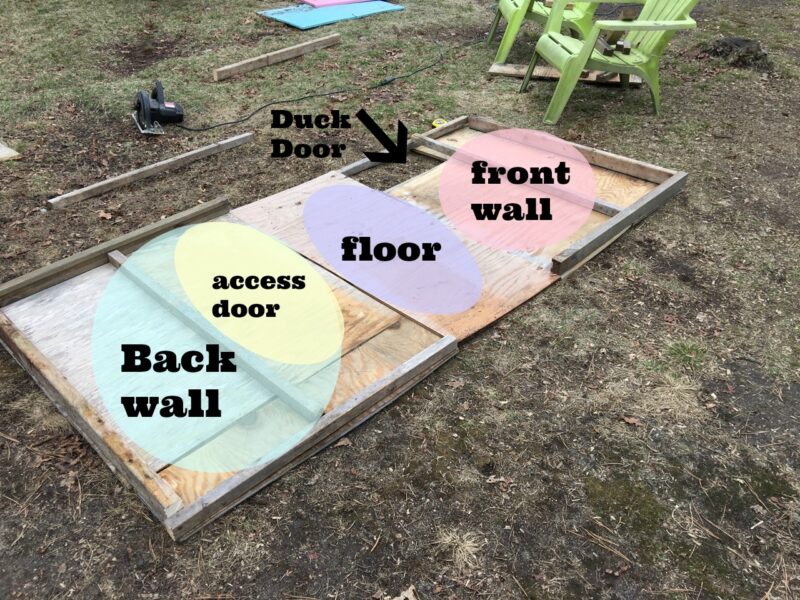
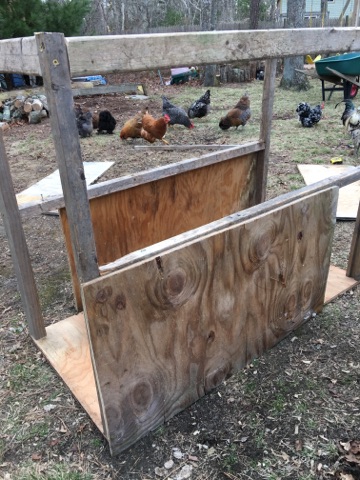
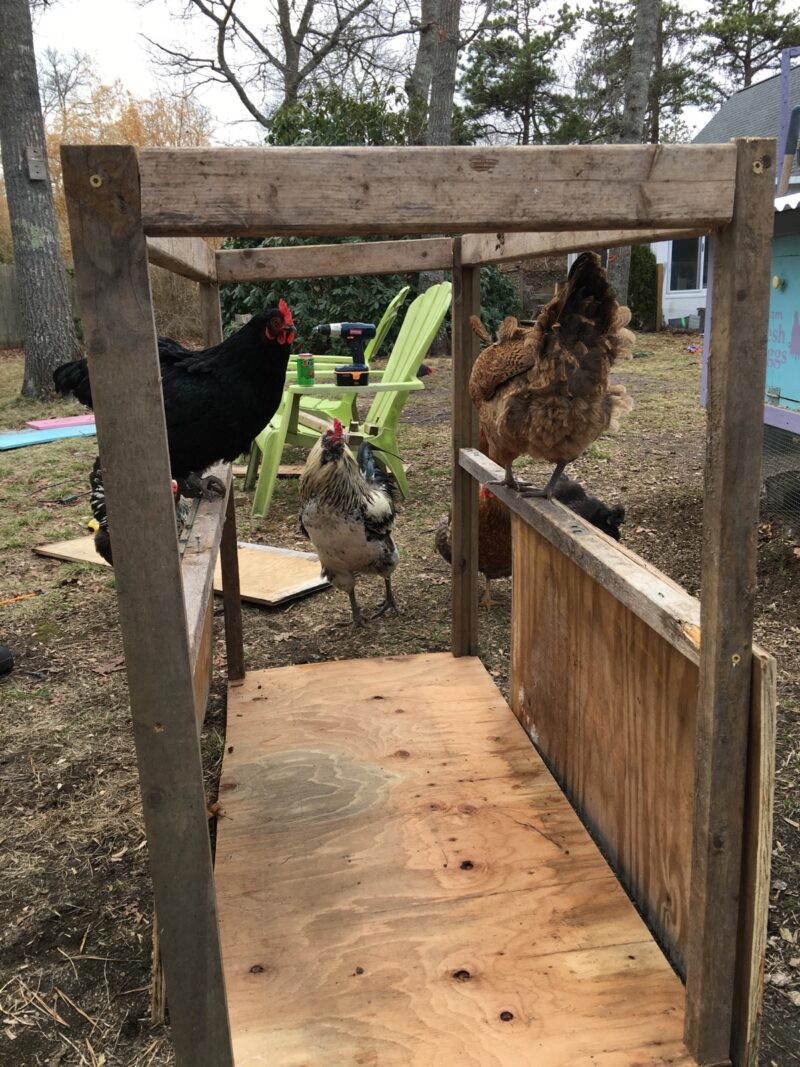
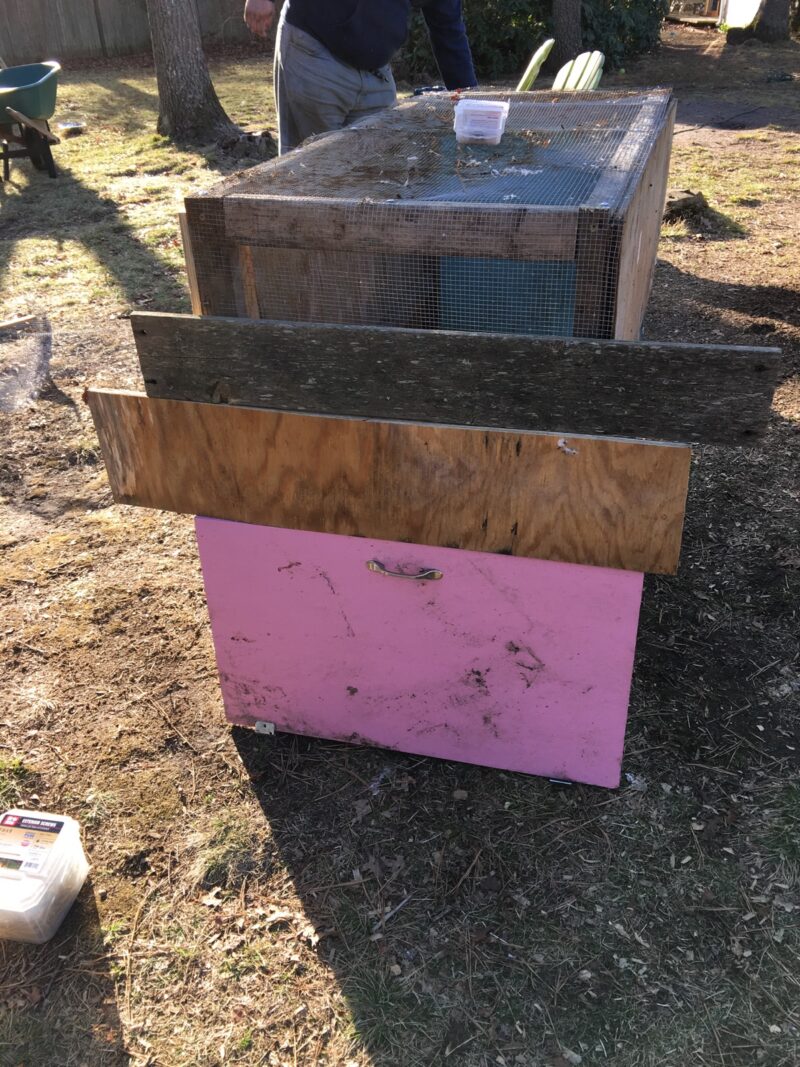
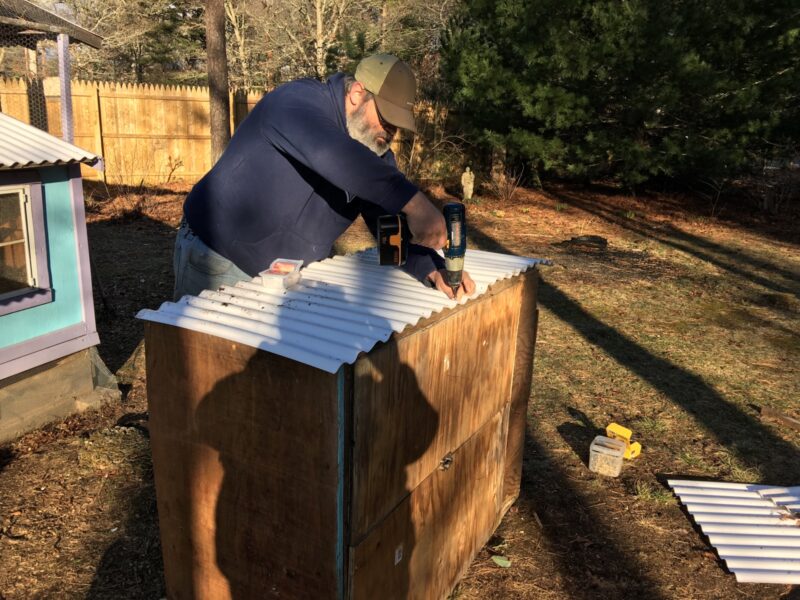
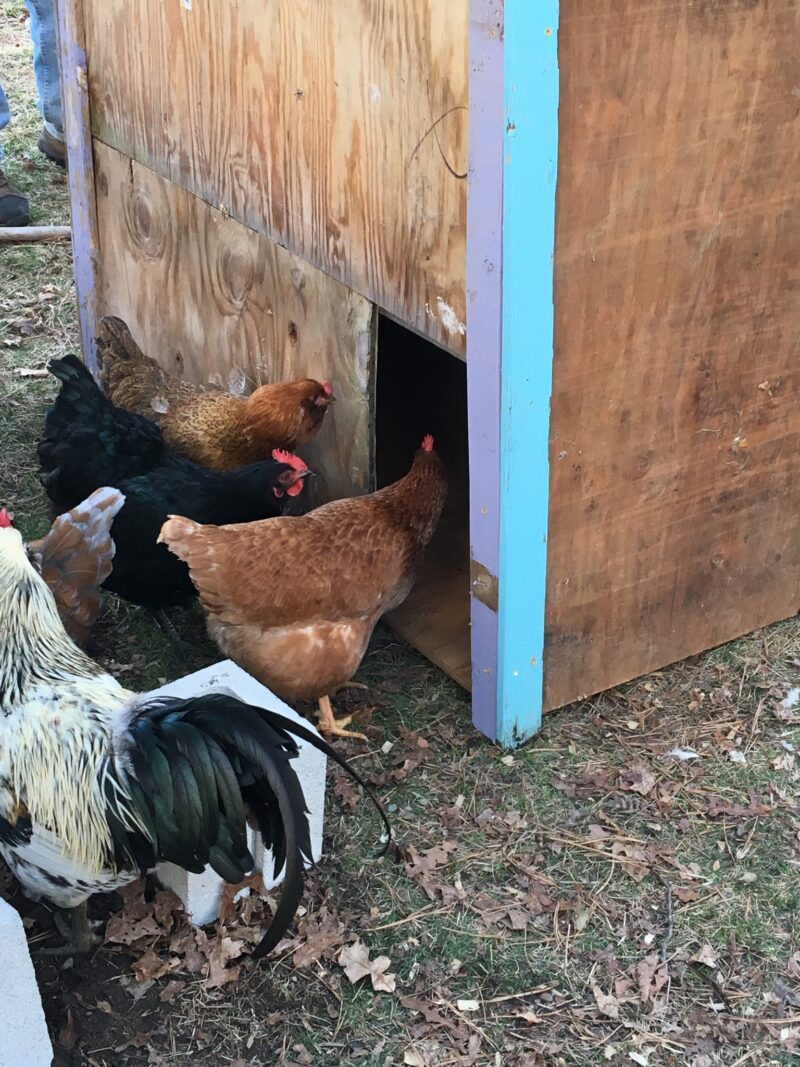
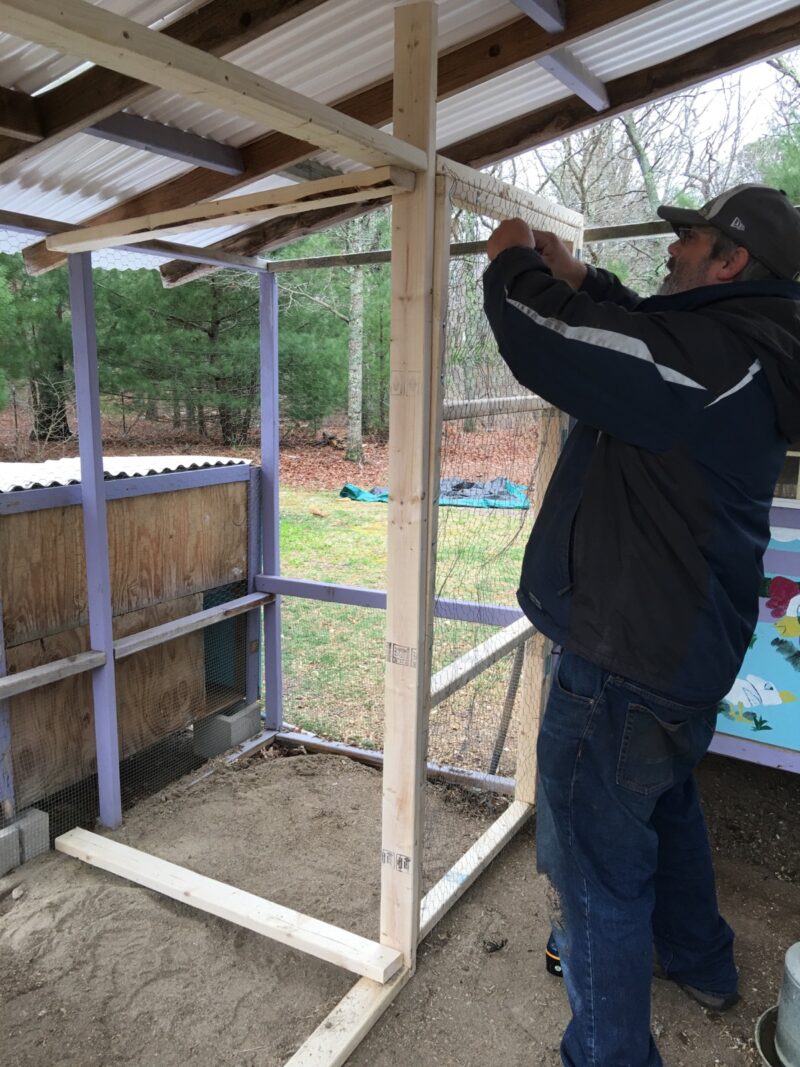
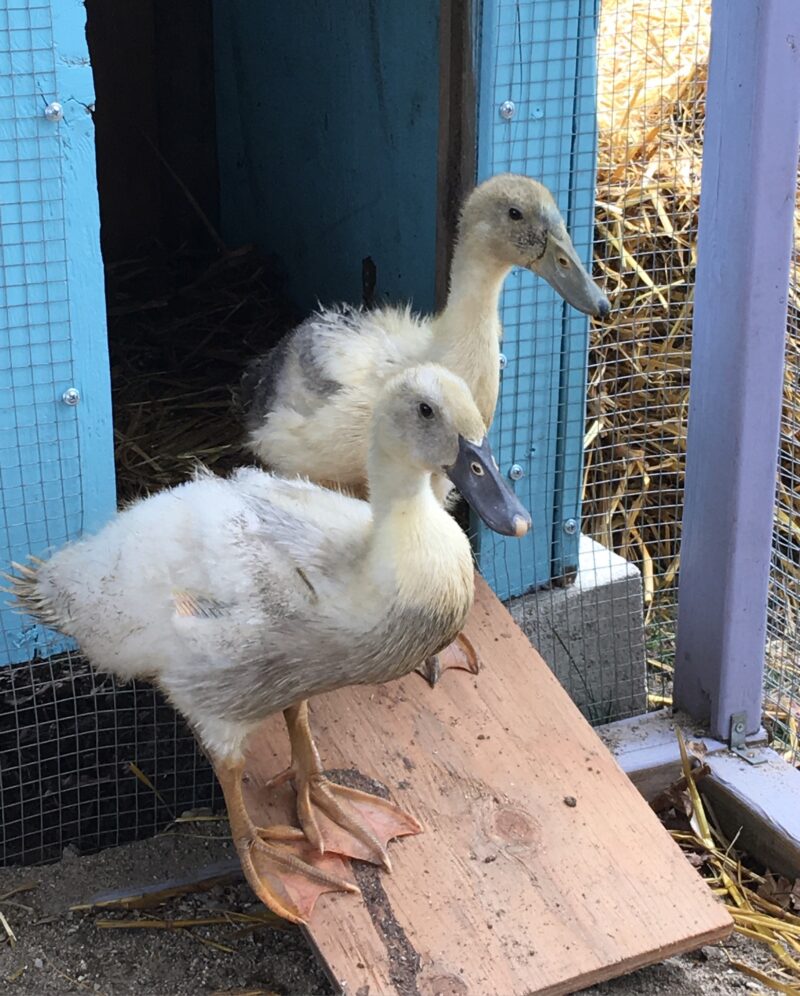
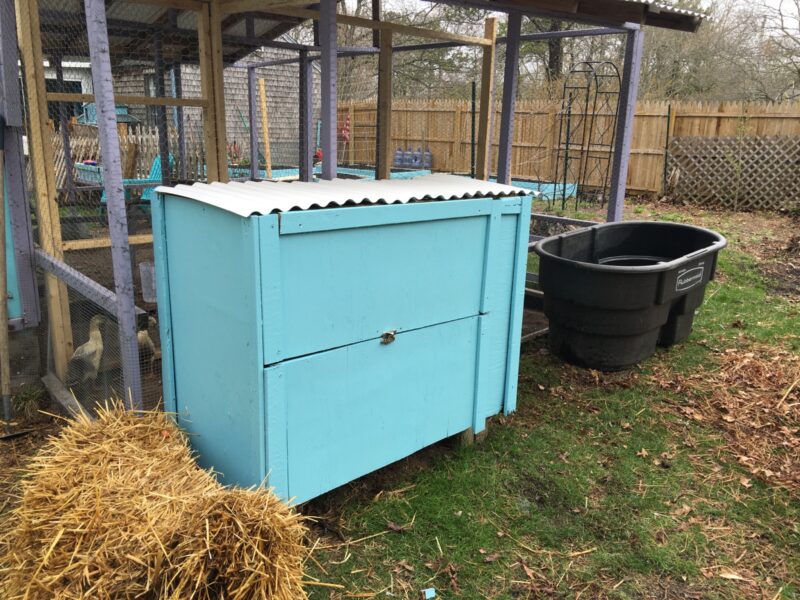
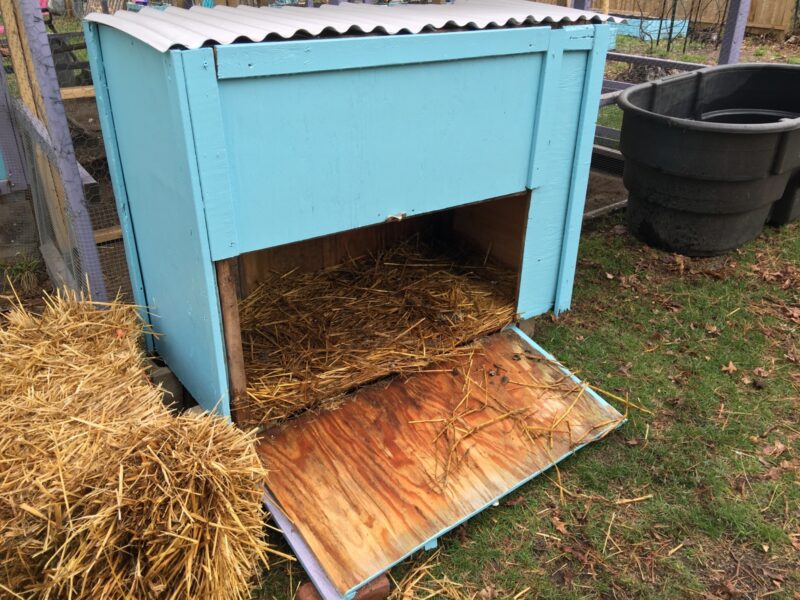
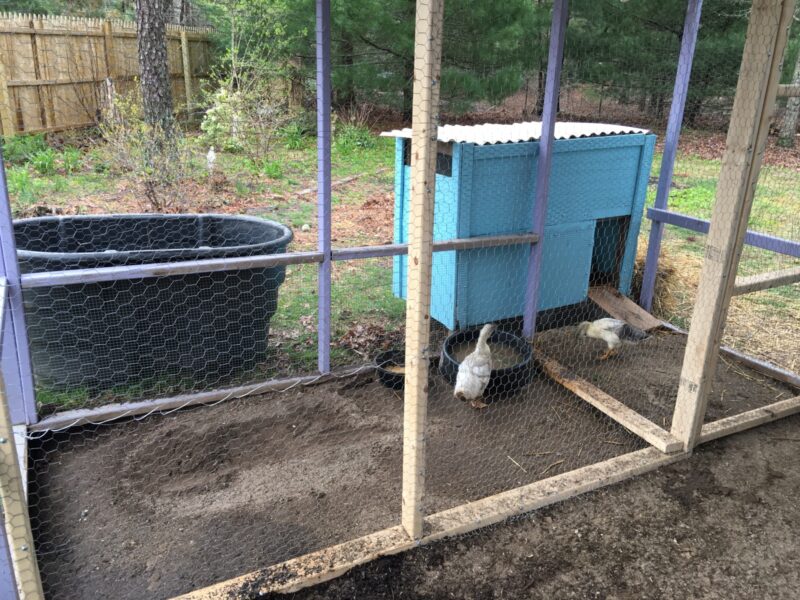
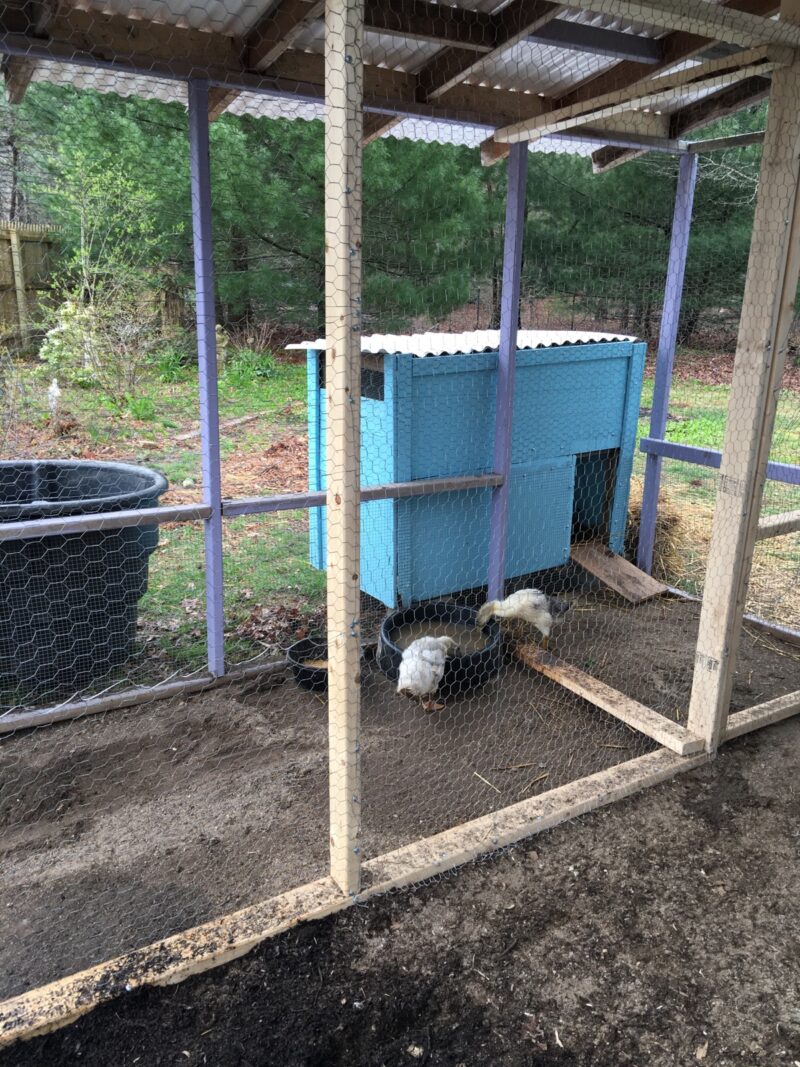



Shanna Shaloy
Wednesday 10th of April 2024
Hello my sister in law and I are proud momma's of 20 chickens that are 7 weeks old and 8 little duckies that are 2 weeks old. we have our chicken babies in their chicken poop but our duckies are getting a little bit for there bed they are in how could we make them a nice little home HELP
Liz
Wednesday 10th of April 2024
2 weeks old is a little young still to be outside for the ducklings (depending on your climate). You might need to find an in between space for them that is still temperature controlled. Once they are 4-5 weeks and it's over 50 degrees at night you can move them outside and start to introduce them to the chicks. 8 ducklings will need a space that is about 10 square feet. You could use a plastic kiddie pool with pet fencing around it. Once they are ready to go outside, they don't need anything too fancy. Our ducks and chickens live in the same coop, so if you have enough room in your chicken coop that could be a good option. They get along well (as long as you don't have more than 2 male ducks). If housing them together try to block off the area under the chicken roosts or the ducks will sleep under there and get pooped on all night. You will also want to keep the water outside of the coop or the ducks will make a horrible mess with it and the chickens don't like wet bedding.
Joni Wilson
Saturday 9th of March 2024
I am NOW excited about a duck house and run space for them. Thanks, JW
Dorothy Grinolds
Monday 7th of March 2022
What are the “must have” tools you would recommend having on hand for building a duck house? I don’t have much and I’m nervous about that part. Thank you so so much!
Liz
Tuesday 8th of March 2022
Hi Dorothy! I would recommend you start by drawing up some plans on graph paper so you will know what you will need. Ducks don't need anything fancy, just a secure box. So you will need dimensional lumber like 2x2 or 2x4s for building the frame of the house. Then plywood or boards to cover the walls, floor, and roof. You will need to make a door that you can close so you can lock the birds in at night to keep them safe. You can make the door from plywood, and you will need to attach it with hinges and a latch to keep it closed. It can be nice to have a "human" door that is a bit bigger that you can use to clean out the coop and collect eggs, that will also need hinges and a latch. If the house is raised up more than a few inches, you will need a ramp for them to access the house. I think lining the floor with stick on vinyl flooring makes cleaning much easier, but is optional. good luck!
Fernie
Monday 26th of April 2021
When was this posted? I have a research paper I'm working on and would like to use this. Thank You
Liz
Monday 26th of April 2021
This article was originally published 5/4/2016
Rachel
Saturday 26th of October 2019
Hi, just wondering what colour your young ducks turned out to be? I have young ducks the same colour at the moment.
Thanks
Liz
Saturday 26th of October 2019
Hi Rachel, in the main photo the duck in front is a splash blue Swedish female so she is a silver/white color and the duck in the background is a male Welsh Harlequin - he has coloring similar to a Mallard. If you look in the section "Our Animals", you can see photos of them all grown up- Eliza & Alexander